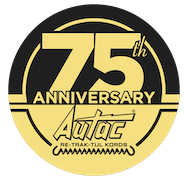Welcome to the ultimate guide to powering cable retractors! If you’re looking for a way to streamline your space, then you’ve come to the right place. Cable management can be a hassle, but with the right tools, it doesn’t have to be. Powering cable retractors is an excellent solution for those who want to keep their cables organized and out of sight.
In this guide, we’ll explore the benefits of using powering cable retractors, how they work, and the various types available on the market today. We’ll also discuss the pros and cons of using these devices and provide tips on how to choose the right one for your needs. So let’s get started!
The Importance of Cable Management
Effective cable management is crucial for several reasons. Firstly, it enhances the aesthetics of your space, creating a clean and organized environment. Secondly, it improves productivity and efficiency by reducing distractions caused by tangled cables. Lastly, proper cable management ensures the longevity of your cables and prevents accidental tripping or damage.
What are Power Cable Retractors?
Power cable retractors, also known as cable reels or cord cables, are devices designed to retract and store cables when not in use. They consist of a reel mechanism, usually spring-driven, and a housing that holds the cable. Power cable retractors are available in various sizes and designs to accommodate different cable types and lengths.
Benefits of Power Cable Retractors
Convenience and Organization
One of the primary advantages of power cable retractors is the convenience they offer. With a simple pull and release, the cable retracts back into its housing, keeping it neatly coiled and out of sight. This eliminates the need for manual winding or dealing with tangled cables, saving you time and frustration.
Space Optimization
By using power cable retractors, you can reclaim valuable space in your home or workspace. Instead of cables sprawling across the floor or draped over furniture, retractors keep them neatly tucked away. This opens up your environment, making it more visually appealing and allowing for better utilization of available space.
Safety and Durability
Power cable retractors provide an added layer of safety by minimizing tripping hazards. Loose cables are a common cause of accidents, especially in high-traffic areas. Retractors keep the cables securely stored and reduce the risk of accidents.
Furthermore, quality retractors are built to withstand regular use and offer durability, ensuring a long lifespan for your cables. Another safe and convenient solution for your electrical needs is coiled power cords.
Choose the Right Power Cable Retractor
To make the most out of power cable retractors, it is essential to choose the right one for your specific needs. Consider the following factors when selecting a power cable retractor:
Length and Extension Capacity
Determine the length of the cable you need based on the distance between your power source and the device. Additionally, ensure that the retractor has sufficient extension capacity to reach the desired location. Another convenient solution that can save your electrical needs is coiled power cords.
Mounting Options
Power cable retractors can be mounted in various ways, such as wall-mounted, ceiling-mounted, or freestanding. Evaluate your space and choose a mounting option that suits your requirements.
Cable Compatibility
Check the compatibility of the retractor with the cables you intend to use. Different retractors are designed for specific cable types, such as power cords, Ethernet cables, or audio/video cables.
Retraction Mechanism
Power cable retractors employ different retraction mechanisms, including spring-driven, motorized, and manual winding. Consider the ease of use and reliability of the retraction mechanism before making a decision.
Installation Guide for Power Cable Retractors
Once you have chosen the right power cable retractor, it’s time to install it. Follow these step-by-step instructions for a successful installation:
1-Preparing for Workspace
Before starting the installation, clear the area where you plan to mount the retractor. Remove any obstructions and ensure a clean and accessible workspace.
2-Mounting Retractors
Follow the manufacturer’s instructions to securely mount the retractor in your desired location. Use appropriate tools and hardware to ensure a stable installation.
3-Connecting Cables
Carefully connect your cables to the retractor, ensuring a secure and proper connection. Take note of any specific instructions provided by the retractor manufacturer.
4-Testing and Adjusting
After the installation, test the retraction and extension of the cable to ensure smooth operation. If needed, make any necessary adjustments to the tension or alignment.
Maintenance and Care Tips
To keep your power cable retractor in optimal condition, follow these maintenance and care tips:
1-Regular Cleaning
Dust and debris can accumulate on the retractor over time, affecting its performance. Regularly clean the retractor using a soft cloth or a mild cleaning solution.
2-Inspecting for Damage
Periodically inspect the retractor for any signs of damage, such as frayed cables or worn-out components. Replace any damaged parts to maintain the safety and functionality of the retractor.
3-Lubrication
If your retractor has moving parts, apply a small amount of lubricant as recommended by the manufacturer. This helps ensure smooth operation and prolongs the lifespan of the retractor.
Creative Ways to Use Power Cable Retractors
Power cable retractors are versatile devices that can be used in various settings. Here are some creative ways to incorporate them:
1-Home Office Setup
Create a clutter-free workspace using power cables for your computer cables, charger cords, and other electronic accessories.
2-Entertainment Centers
Transform your entertainment center into a sleek and organized space by using retractors for your TV cables, gaming console cords, and audio cables.
3-Workshop or Garage
Keep your tools and equipment area tidy and hazard-free by utilizing the power cable retractor for your power tools, extension cords, and lighting cables.
Conclusion
A power cable retractor is the ultimate solution to streamline your space and eliminate cable clutter. By choosing the right retractor, following the installation guide, and implementing maintenance tips, you can enjoy the benefits of organized cables, enhanced safety, and optimized space. Say goodbye to cable chaos and hello to a clean and efficient environment!
FAQs
Q1. Are power cable retractors suitable for outdoor use?
A1. Some power cable retractors are designed for outdoor use and offer weather-resistant features. Check the specifications of the retractor and ensure it is suitable for your specific outdoor application.
Q2. Can power cable retractors accommodate different cable lengths?
A2. Yes, power cable retractors are available at various lengths to accommodate different cable requirements. Choose a retractor with the appropriate extension capacity for your needs.
Q3. Can the power cable retractor be used for multiple cables?
A3. Yes, there are retractors available that can accommodate multiple cables. This is especially useful when you have several devices in close proximity that require power or connectivity.
Q4. Is the power cable retractor easy to install by yourself?
A4. Installation difficulties may vary depending on the retractor and mounting option chosen. Most retractors come with clear instructions, and if you follow them carefully, you should be able to install them yourself. However, if you are unsure or uncomfortable with the installation process, it is always recommended to seek professional assistance.
Q5. Can the power cable retractor be adjusted for cable tension?
A5. A power cable retractor allows you to adjust the cable tension to your preference. Refer to the retractor’s manual or instructions to determine if this feature is available and how to make the adjustments.





Recent Comments